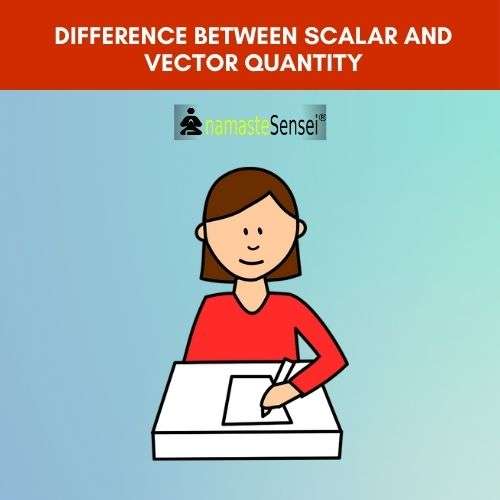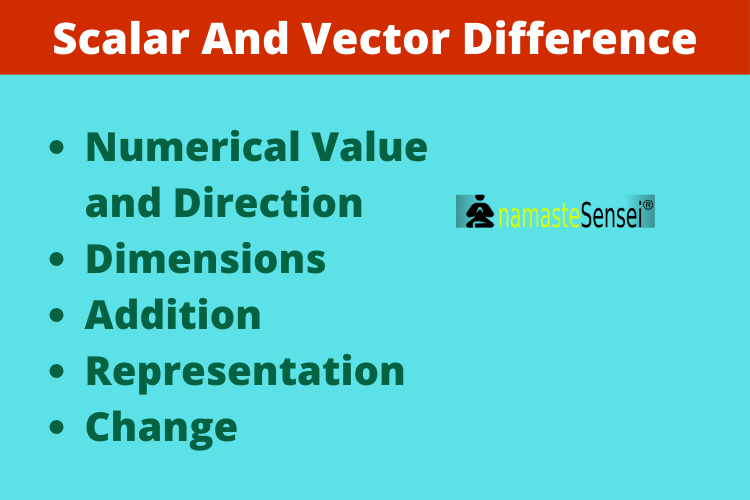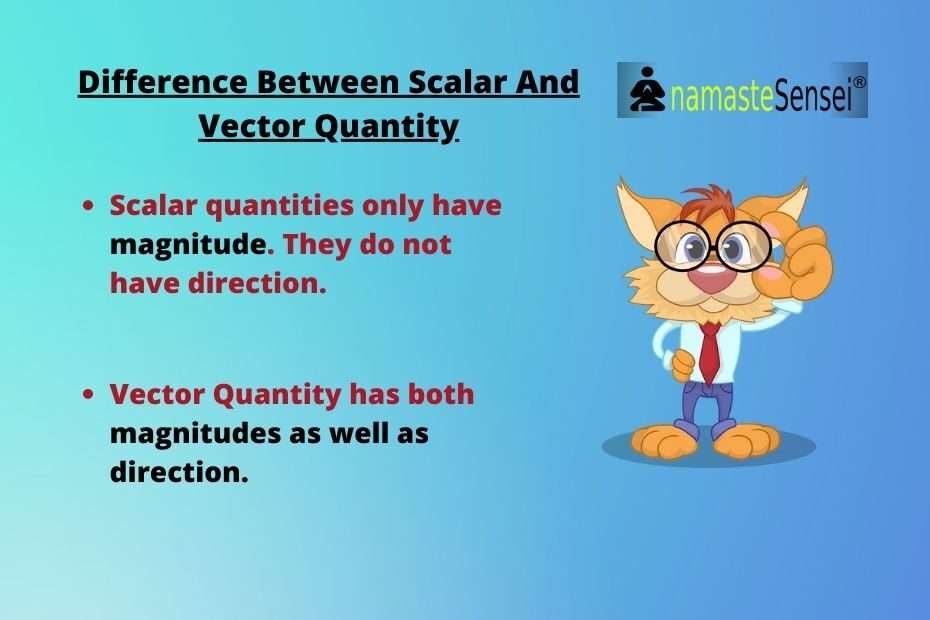What is the Difference between scalar and vector quantity?

Difference Between Scalar And Vector Quantity
Before you read any further it might be a good idea to read about What are Vector Quantities.
Recommended Read: What are Vector Quantities?
In Brief
- Certain physical quantities have been chosen as base quantities (such as length, time, and mass); each has been defined in terms of a standard and given a unit of measure (such as meter, second, and kilogram). Other physical quantities are defined in terms of these base quantities and their standards and units.
- Physical quantities are those quantities in which all physical laws can be expressed and which can be measured directly or indirectly.
- Physical quantities can be classified into two types.
1. Scalar Quantity
2. Vector Quantity.
- Knowledge of vectors is important because many quantities used in physics are vectors. If you try to add together vector quantities without taking into account their direction you’ll get results that are incorrect.
Recommended Read – 30 Examples of Vector Quantities
- Before understanding more about vectors it is also important to distinguish between scalar and vector quantities.
Difference between Scalar and Vector Quantity in points

-
Numerical value and Direction
Scalar Quantity
- Scalar Quantity – Not all physical quantities involve a direction. Temperature, pressure, energy, mass, and time, for example, do not “point” in the spatial sense. We call such quantities scalars, and we deal with them by the rules of ordinary algebra (addition, subtraction, etc). A single value, with a sign (as in a temperature of – 40°F), specifies a scalar quantity.
- Scalars, such as temperature, have magnitude only. They are specified by a number with a unit (10°C) and obey the rules of arithmetic and ordinary algebra.
Vector Quantity
- A vector quantity is a quantity that has both a magnitude and a direction and thus can be represented with a vector.
- Vectors require a specified or assumed direction. A vector quantity is incomplete without a direction.
- Some physical quantities that are vector quantities are displacement, velocity, and acceleration.
- Vectors, such as displacement, have both magnitude and direction (5 m, North) and obey the rules of vector algebra.
-
Dimensions
- A Scalar quantity is a one-dimensional quantity because as we know Vector quantity has a magnitude whereas a scalar quantity has a magnitude but no direction. If something has a direction, it will definitely have more than one dimension.
- Scalar quantities have a size or magnitude only and they need no other information to specify them. Thus, 40 cm, 10 seconds, 7 liters, and 3 kg are all examples of scalar quantities. They are one-dimensional.
- A vector is a physical quantity that has a magnitude and a direction. Vectors can be either two-dimensional, with components in the x and y directions, or three-dimensional, with components in the x, y, and z directions.
- A particle moving along a straight line can move in only two directions. We can take its motion to be positive in one of these directions and negative in the other. For a particle moving in three dimensions, however, a plus sign or minus sign is no longer enough to indicate a direction. Instead, we must use a vector.
-
Addition
- Scalar quantities obey the rules of arithmetic and ordinary algebra. But vectors are added according to vector laws of addition.
- Vectors can be added only if they are of the same nature.
For instance, acceleration should be added with only acceleration and not mass. - We cannot add vectors and scalars together
-
Representation
- Scalars are denoted by simply alphabets. For example, mass is represented by the alphabet ‘m’.
- The arrow specifies the vector graphically. Visually, a vector is represented by an arrow. The length of the arrow indicates the magnitude of the vector, and the direction of the arrow is the direction of the vector. The point at the tail of the arrow is called the initial point of the vector, and the tip of the arrow is called the terminal point.
-
Change
- Scalar quantities change when their magnitude changes.
-
Vector quantities change when:
1. Magnitude changes
2. Direction changes
3. Magnitude and Direction both change.
Difference Between Scalar And Vector Quantity with example – (Comparision Table)

Scalar And Vector Quantity Difference
Let us now differentiate between scalar and vector quantity using the following comparison table.
| Scalar Quantity | Vector Quantity |
| Scalar quantities only have magnitude. They do not have direction. | Vector Quantity has both magnitudes as well as direction. |
| Scalar quantities have a size or magnitude only and they need no other information to specify them. Hence they are one-dimensional. | Vectors can be either two-dimensional, with components in the x and y directions, or three-dimensional, with components in the x, y, and z directions. |
| Scalar quantities obey the rules of arithmetic and ordinary algebra. | Vectors are added according to vector laws of addition. For Example, the Triangle Law of vector addition. |
| Scalars are denoted by simply alphabets. For example, mass is represented by the alphabet ‘m’. | A Vector quantity is represented by an arrow. |
| Scalar quantities change when their magnitude changes. | Vector quantities change when their magnitude or direction changes. |
| For Example, 3 meters, and 32 °F are examples of scalar quantities. | For Example, the speed of wind is 10 miles per hour out of the north. |
Congratulations, you have read the complete article about the difference between scalar and vector quantity. If you have any doubts or queries, feel free to comment below. We will respond as soon as possible.
Or Email Us At [email protected]
More Articles
| 30 Examples Of Vector Quantities | Vector Quantities |
Any topic you want us to cover? Let us know.
